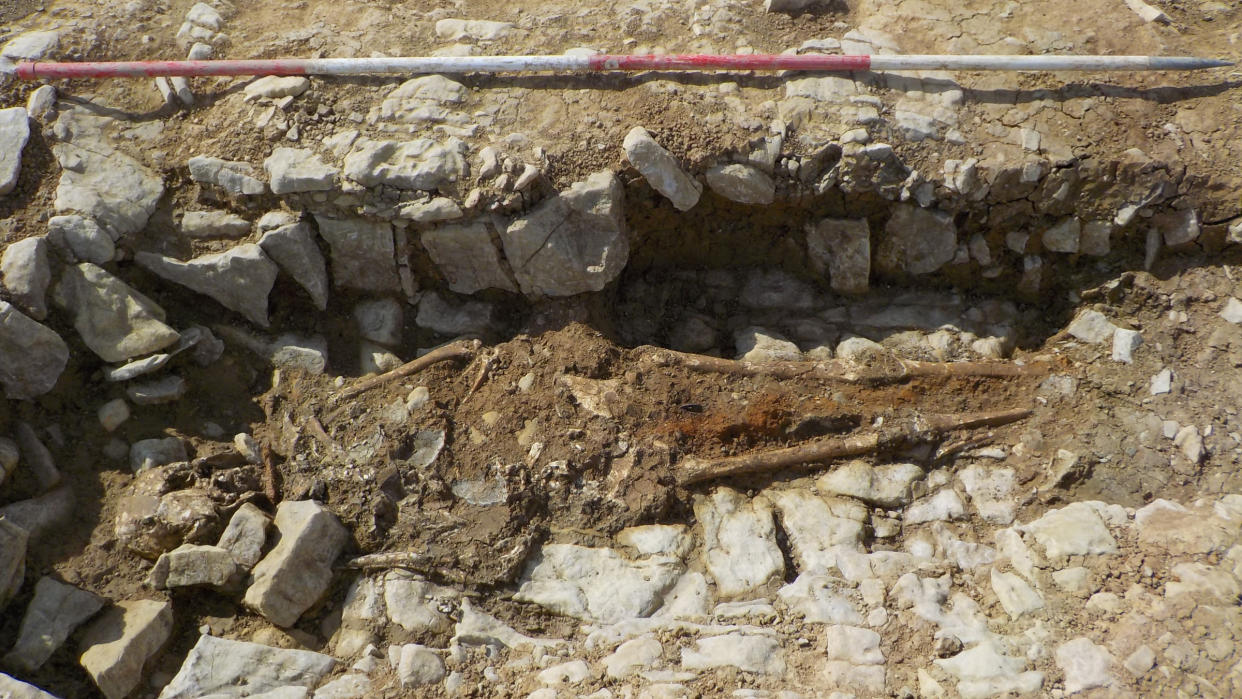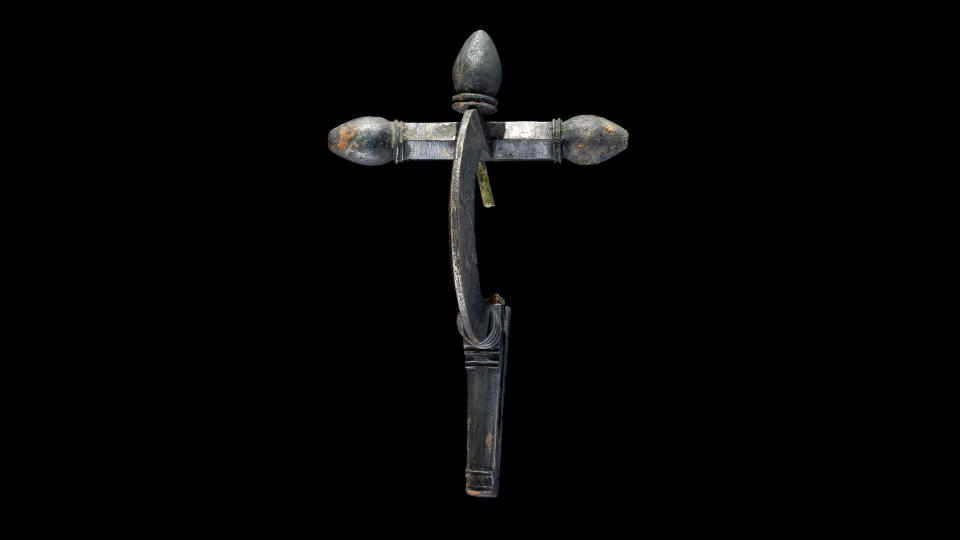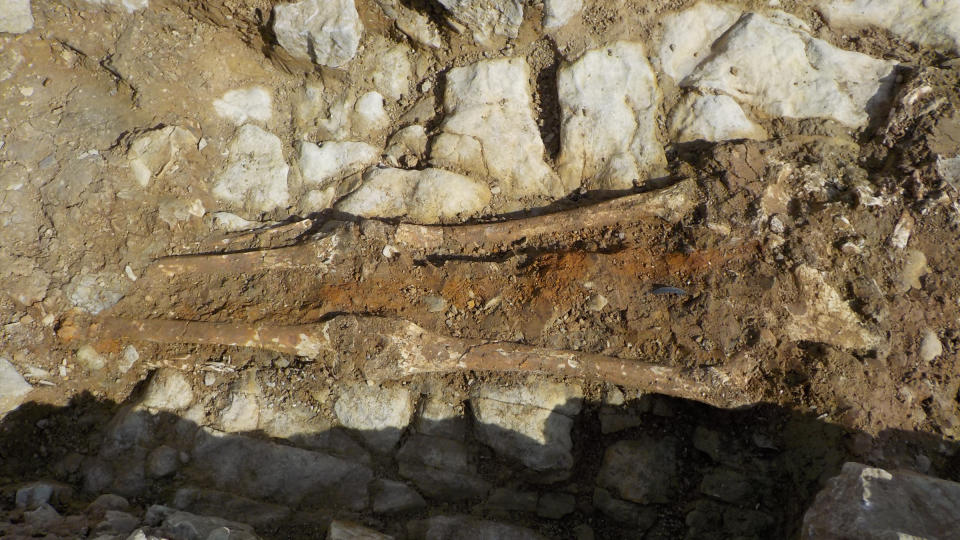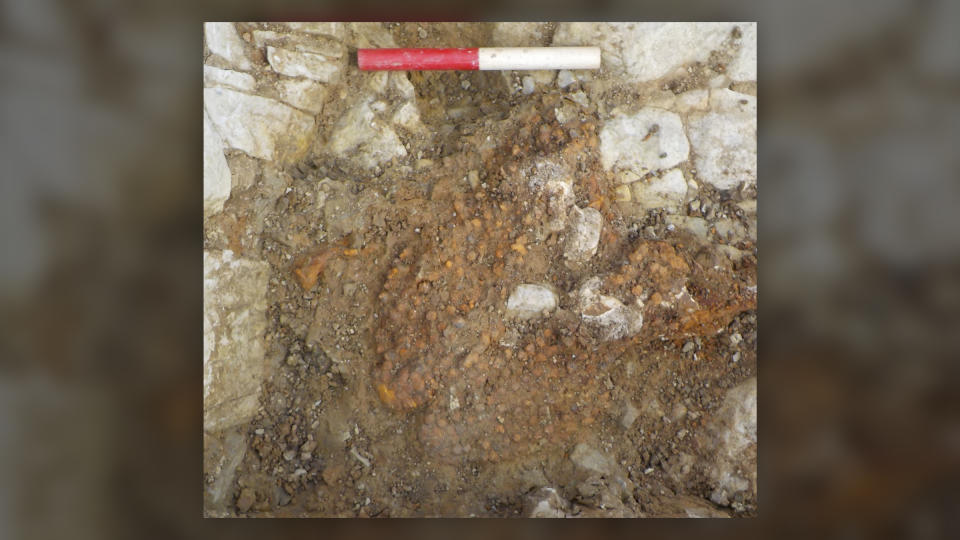Elite Roman man buried with sword may have been 'restrained' in death

In an isolated field near a Roman villa in Wales, archaeologists have discovered the skeleton of a man buried facedown. Adorned with a silver pin and a sword, he may have been a Roman soldier — but large nails near his neck, back and feet offer tantalizing evidence that he was restrained at death.
This burial and four others, which date to the mid-third to the late-fourth centuries, were discovered by Red River Archaeology, a U.K.-based archaeological firm, during a road improvement project near the town of Barry in south Wales. Archaeologists think the burials may be associated with the Whitton Lodge Roman villa, which was originally excavated half a century ago.
The man, estimated to be between 21 and 25 years old at death, was placed in a rock-cut grave that may have been edged with wooden planks, based on the discovery of nails at the top and bottom of the pit, according to Mark Collard, managing director of Red River Archaeology. In an email to Live Science, Collard noted that "the prone [facedown] position and very large nails at the back of the neck, shoulder and between the feet may indicate restraints."

Contrary to an interpretation of a non-elite or enslaved individual, though, the man's personal ornaments — an iron sword, hobnailed boots and a silver crossbow-style brooch — suggest he may have been an elite member of the Roman military.
Evan Chapman, senior curator of archaeology at Amgueddfa Cymru — Museum Wales, said in a statement that "this is the first example of a Roman silver crossbow brooch to be found in Wales." These brooches, likely used to fasten a cloak, were often associated with the Roman military. "The presence of the sword would support the military connection in this instance," Chapman said.
Related: 'Liquid gypsum' burial from Roman Britain scanned in 3D, revealing 1,700-year-old secrets

Direct analysis of the man's bones and teeth revealed more details about his life. For example, he was suffering from mastoiditis, a bacterial infection of the mastoid bone behind the ear, when he died. This condition can be cured easily with antibiotics today, but in Roman times, it could have been a death sentence.
An analysis of isotopes — elements with varying numbers of neutrons in their nuclei — of the man's bone and tooth enamel also showed that he "likely grew up further east, possibly from the Welsh borders or beyond," Rachel Morgan, a project archaeologist for Red River Archaeology, said in the statement. "So what was this rich man doing on a farm in south Wales when he died?"

It is not unusual to find Roman burials outside of formal cemeteries. But the man's prone position — as well as the discovery of a nearby grave with a decapitated individual whose skull was placed at their feet — is notable, Collard said, as other Roman Britain burials also suggest a "clear association between the occurrence of prone and decapitated burials."
related stories
—'Exquisite' wooden figurine dating to early Roman Britain found in a ditch in England
—Gladiators fought in Roman Britain, action-packed cremation urn carvings reveal
—'Lost' 2nd-century Roman fort discovered in Scotland
For example, another set of Romano-British cemeteries at Knobb's Farm, just north of Cambridge, was found in 2021 to have had a very high number of burials out of the norm. Out of the 52 total burials there, 13 (25%) were prone, while 17 (33%) were decapitated. Researchers have begun to pay more attention to patterns of atypical burials in Western Europe during the Roman period, but so far, no single explanation for these kinds of burials has been found. Whether it was for low-status individuals, criminals or those their communities wanted to ensure "stayed dead," cross-culturally, prone burials are never seen as a positive way of disposing of the deceased.
This Roman soldier is therefore something of a mystery — one that may never be solved. "It is interesting that he was buried prone but still with his 'regalia,'" Collard said. "Raises more questions than answers!"

